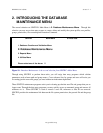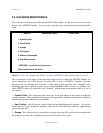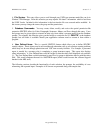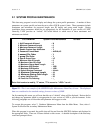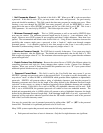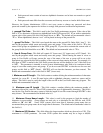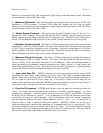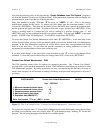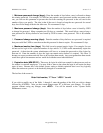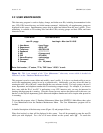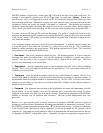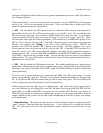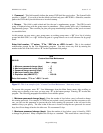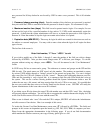SENTRY User’s Guide Section 2 - 7
Fitzgerald & Long
However, we recommend using UIDs smaller than 5 digits simply to make them easier to read. The default
and recommended value for this field is 1000.
13. Maximum GID Number - This field defines the largest number which may be used as a GID. This
maximum is a UNIX parameter. On some UNIX systems this number may be as large as 60,000.
However, we recommend using GIDs smaller than 5 digits simply to make them easier to read. The default
and recommended value for this field is 1000.
14. Default Startup Command - This field contains the string executed at login for the user. It is
generally the “shell” command. The User Profile uses this field as a default value for creating a new user.
Simply returning past the startup command field will assign this value. The default value for this field is
/bin/sh. The recommended value for this field is the “normal” startup command for your average user.
15. Maximum Command Length - This field is a UNIX parameter and is generally documented in the
Administrator’s Guide for adding a user ID. The value of this field should be consistent with your version
of UNIX. On our system this maximum is set at 44 characters. Obviously a normal path to a UNIX shell
(such as /bin/sh) will be much smaller than 44 characters. The default value for this field is 44 characters.
The recommended value for this field is your system’s maximum value.
16. Maximum Startup Path Length - This field is a UNIX parameter and is generally documented in
the Administrator’s Guide for adding a user ID. The value of this field should be consistent with your
version of UNIX. On our system this maximum is set at 50 characters. This is the maximum number of
characters allowed in the pathname commonly referenced as the “home” directory. It is the directory into
which UNIX attaches the user at login. The default value for this field is 50 characters. The recommended
value for this field is the maximum number allowed by your version of UNIX.
17. wtmp Valid Days Old - SENTRY determines users last login date and time by using a UNIX
accounting file called “wtmp” which contains a log of user logins. The UNIX accounting feature which
updates “wtmp” may be turned on and off. SENTRY has no way of knowing if accounting is turned on or
not, so it looks for recent activity in the “wtmp” file. If no activity is found in the file during the last
number of days specified in this parameter, SENTRY assumes that accounting is turned off and doesn’t try
to determine a user’s last login date and time. Our default is set to 30 days.
18. Punct for File Indexing - SENTRY builds B-trees to provide rapid cross referencing into the file
system. For example, let’s imagine that you are looking for a file called “payroll.something”. You can’t
remember the “something”. In the File System screen you may enter “payroll” and SENTRY will search
the B-trees for all references to “payroll”. A list of pathnames to all files and directories whose name
contains the string “payroll” will be displayed. The cross referencing on the word “payroll” is dependent
upon the characters defined in this field. Special characters such as “.” and “-” or “_” are used in file or
directory names to make a compound name more readable. SENTRY’s B-trees will use the set of
characters defined here to break out the components of a compound name such as “payroll.ledger”. This
file would be indexed on the word “payroll” and on the word “ledger”. Care should be taken in selecting
these characters for cross referencing; limit them to those which are commonly used. The size of the B-
trees increase significantly as the number of characters in this list increases.





